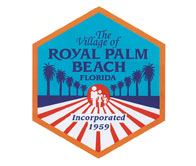The majority of residents living along La Mancha Avenue in Royal Palm Beach did not vote to support a traffic-calming plan on the neighborhood road.
While more votes came in to support the project than oppose it, the vote count came in far short of the 50 percent support needed among all property owners for the project to move forward.
The project to implement traffic-calming devices on the roadway resulted from a petition made at a Royal Palm Beach Village Council meeting in May 2016. A traffic study was completed in June 2017, which showed that 85 percent of the 1,000 to 3,000 vehicles driving on La Mancha Avenue daily were driving above the speed limit of 35 mph. The results of the study classified La Mancha as a neighborhood road that could benefit from road devices aimed to slow down traffic.
The village held a special meeting on Thursday, April 26 to inform residents about the proposed traffic-calming plan for La Mancha Avenue.
With the Royal Palm Beach Traffic Calming Policy, the village aims to address traffic-related issues in neighborhood streets, such as La Mancha Avenue. The proposed speed controls were to be for two segments of La Mancha Avenue, south of Madrid Street and north of Madrid Street.
On La Mancha, engineering consultant Simmons & White recommended that residents vote to implement speed tables and radar speed signs as an effort to slow traffic down.
Ballots were due by May 10 and were tallied and certified on May 17. The total ballots cast determined that 30.3 percent of residents were in favor of the traffic-calming plan for La Mancha Avenue south of Madrid Street, and 28.6 percent of residents were in favor of it for La Mancha Avenue north of Madrid Street. Every resident who did not vote was tallied as a vote against the traffic-calming plan.
In terms of raw numbers, the northern portion had 27 votes in favor and 20 votes opposed out of a total of 91 properties, while the southern portion had 16 votes in favor and 7 votes opposed out of a total of 56 properties.
The traffic-calming policy requires a minimum favorable 50 percent plus one of total resident votes in order to implement a traffic-calming plan on the roadway.
According to Royal Palm Beach Village Engineer Chris Marsh, there were numerous reasons for the declining vote.
“When you put one of these devices on the roadway, you’re punishing the people who do abide by the speed limit,” he explained. “People were concerned about emergency responders. In an emergency situation, seconds matter, and we know that. Also, people who have back injuries would definitely be affected, in relation to discomfort caused by the bumps.”
Marsh also highlighted that the residents of La Mancha Avenue would be the ones affected by the noise, signs and overall disruption caused by the speed controls on their neighborhood roadway.
The village’s effort to implement speed-reducing tables was mainly in order to control the speed limit of those who drive through La Mancha Avenue at rapid speeds, not taking into consideration that it is a residential road.
“The reality is that if people respect one another, and the fact that [La Mancha] is a residential roadway with children playing or people getting their mail, then it will be a better corridor,” Marsh said. “It’s not always the best solution to put a device in that will punish those who do drive the speed limit.”
The village has successfully implemented a traffic-calming plan on Sandpiper Avenue, which Marsh explained was a different process altogether.
“I think they work when you have cut-through traffic. When we did the Sandpiper study, people who came to the meeting were strongly for it, and [with La Mancha], it was the complete opposite. It varies by neighborhood,” he said.
The traffic-calming policy also states that a roadway that has once been considered for a traffic-calming plan cannot be considered again for at least five years, so La Mancha Avenue will not be eligible for consideration again until May 2023.
“It cannot come back up for five years, unless a very major situation comes up in which we think we need to take a look at it again,” Marsh said. “It takes a lot of money and time to have specialists conduct studies like this.”
So, for now, the traffic and speeding situation on La Mancha Avenue will likely remain the same.
“The experience that we have had with traffic-calming is that it is, typically, very close to a 50/50 [opinion],” Marsh said. “It’s a gray area. As long as people in these neighborhoods respect the speed limit, then there is no issue — the people who are speeding aren’t the people who live there. And we do have law enforcement that will continue patrolling this area to set up speed traps and deal with it.”








